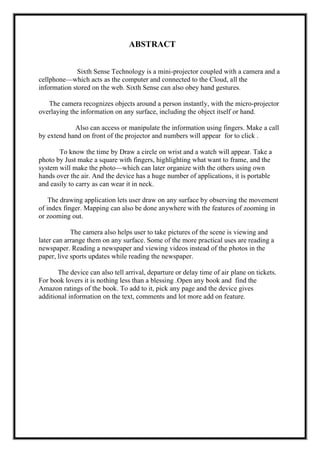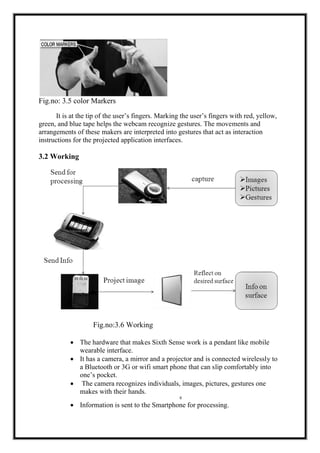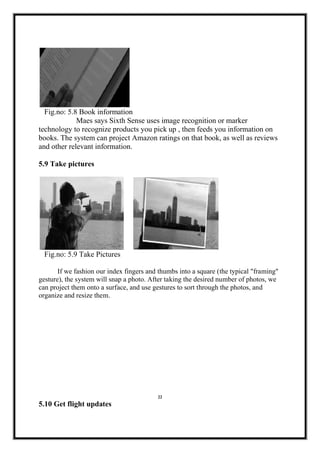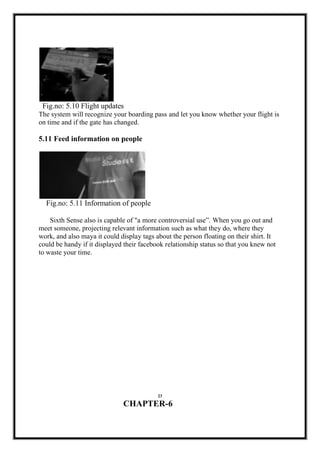Sixth Sense technology allows users to access digital information about objects and surfaces in the physical world using hand gestures. It consists of a camera, projector, and mirror connected to a mobile device. The camera recognizes hand gestures and objects, and the projector displays additional digital information onto physical surfaces based on the camera's input. Some examples of uses include getting information about books by gesturing near them, checking flight statuses by gesturing over boarding passes, and making calls or accessing maps with hand gestures in the air. The technology aims to more seamlessly integrate digital information into everyday life using natural hand motions.













![images you see, track your gestures, and then relate it all to relevant information at the
same time."
The software recognizes 3 kinds of gestures:
_ Multitouch gestures, like the ones you see in Microsoft Surface or the iPhone --
where you touch the screen and make the map move by pinching and dragging.
_ Freehand gestures, like when you take a picture [as in the photo above]. Or, you
might have noticed in the demo, because of my culture, I do a namaste gesture to start
the projection on the wall.
_ Iconic gestures, drawing an icon in the air. Like, whenever I draw a star, show me
the weather. When I draw a magnifying glass, show me the map. You might want to
use other gestures that you use in everyday life. This system is very customizable.
The technology is mainly based on hand gesture recognition, image
capturing, processing, and manipulation, etc. The map application lets the user
navigate a map displayed on a nearby surface using hand gestures, similar to gestures
supported by multi-touch based systems, letting the user zoom in, zoom out or pan
using intuitive hand movements. The drawing application lets the user draw on any
surface by tracking the fingertip movements of the user’s index finger.
10
CHAPTER-4](https://image.slidesharecdn.com/14-568-170920172004/85/14-568-14-320.jpg)














